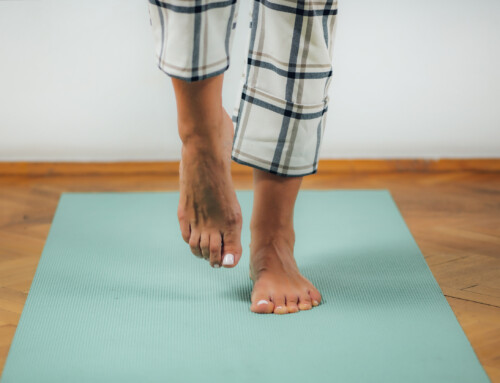Balance, Mobility & Fall Prevention
Falls are unfortunately something that we hear about way too frequently. Some falls can be avoided or prevented with the proper knowledge and steps, including exercise, balance training, and education, and maybe physical therapy for balance and fall protection. This post may not apply to you, but you may have some family members in this category whom you can help educate. Below are just a few quick tips when it comes to balance and fall prevention.
How do you know if you or a family member are at risk for falling?
- Increasing age, especially over 80 years old
- Weakness in your legs, trunk
- Difficulty with walking, getting up from a chair, getting out of bed in the morning
- Vision problems (cataracts, macular degeneration, wearing bifocals)
- Medical conditions that limit your ability to get around or cause neurological problems, such as Parkinson disease, stroke, or diabetes
- Conditions that cause confusion, such as dementia and Alzheimer disease
- Depression
- Are on certain medications with side effects causing balance problems
- Home hazards (throw rugs, pets underfoot, poor lighting)
- Low blood pressure
- Trying to do more than one task at the same time, especially in complex environments
Read:
At Home Fall Prevention Checklist for Seniors
The Direction We Should Be Moving
What do we look for in physical therapy?
If you are worried about falling (or about a family member falling) or if you recently had a fall, we can conduct a brief check (“screening”) of fall risk. If the screening shows that you are at risk, the therapist will perform a thorough evaluation, including:
- A review of your medical history
- A review of your medications
- A simple vision test
- A simple screen of your thinking abilities
- A check of your heart rate
- Blood pressure measurements while you change positions (from sitting to standing)
- Feet and footwear assessment
- Assessment of your nervous system
Read:
Foot Pain Assessment and Treatment
Physical Therapy: the Secret to Anti-aging?
We will also:
- Measure your leg strength, using simple tests such as timing how long it takes you to risk from a chair
- Determine how quickly and steadily you walk
- Assess your balance—for instance, by having you stand on one leg or rise from a chair and walk
- Use special tests to measure your balance
Based on the evaluation results, the therapist at Capital Area PT will design an exercise and training program to improve you or a family member’s balance and strength.
A few quick tips to assist in balance and fall prevention:
1. Exercise! Daily exercise is so important, including at home,walking, aerobics on land or in a pool, or in a fitness center. Grab a partner and exercise together
2. If you use a walker or cane, use the walker or cane. It is always safer to have it with you versus risking a fall
3. Make sure your home is clear of hazards. For example, check rugs to make sure they aren’t rolling up in the corners, keep the floor clear of objects, and make sure there is always proper lighting.
4. Keep regular appointments with your doctor, who can monitor your blood pressure and keep your medications on track. Talk to your doctor about your balance and strength.
5. If you have elderly family members who live alone and are at risk of a fall, certain devices are beneficial to ensure that help can be on the way if it does happen. For example, products like Life Alert can call for medical assistance in this case.
The experienced physical therapists at Capital Area Physical Therapy can provide a fall risk assessment and preventative maintenance to help minimize your risk of injury and maintain a higher quality of life. For more information about physical therapy for balance and fall prevention, contact them at their Saratoga Clinic at 518-289-5242, or in Queensbury at 518-289-5242.






